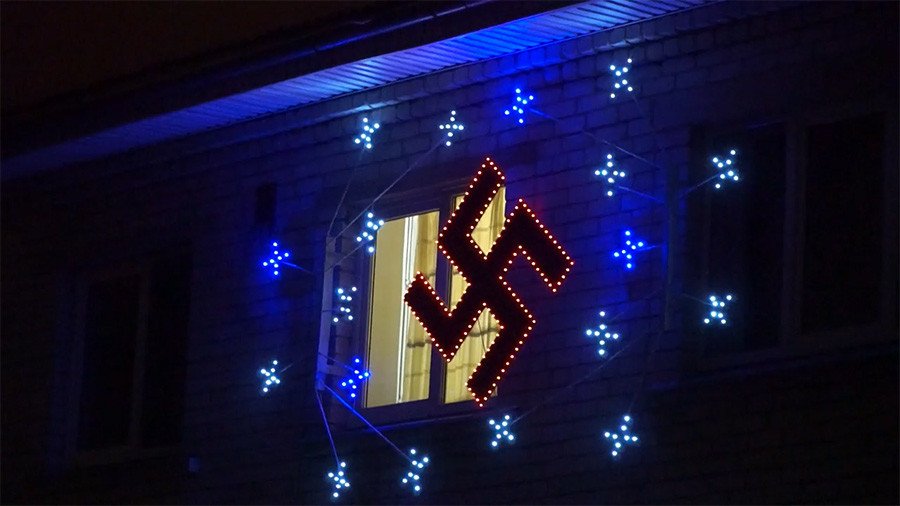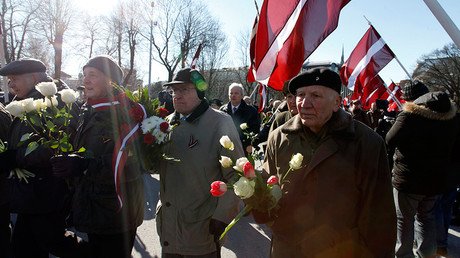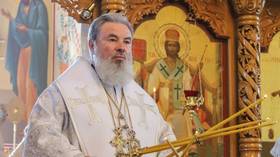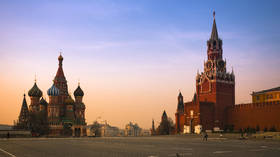Latvian man lights up swastika Christmas ornament, authorities say it's a folk symbol

Residents of a town in Latvia reported seeing a huge shining swastika among a neighbor's outdoor Christmas decorations, but city authorities brushed it off, saying it was an ancient folk symbol unrelated to the Nazis.
Neighbors and passers-by reported the festive fandangles on Kalnsetas street in Saldus, western Latvia, confused at seeing the disturbing symbol displayed so openly.
But a representative of the district council told the Delfi news portal that the owner of the house has always put up decorations around Christmas-time, and this year chose the “Fire Cross”, the traditional Latvian symbol of fire. Dina Neimeta, a public and international relations official at the council, said although some may find the set-up confusing it was not breaking any laws.
A number of other Saldus residents seemed to agree. "This is not a swastika. A swastika is the other way around," Uldis, a local janitor, told RT’s Ruptly video agency.
In fact, the Nazi swastika is the exact same way around, and even tilted at the same angle on the Third Reich's 1933-1945 flag, and in that shape is banned in a number of European countries.
While the swastika in the general sense is a spiritual and religious symbol that has been seen for millenia across India and Asia, the particular straight-angled, tilted, right-facing form displayed in Saldus has now come to be firmly associated with Nazi Germany and the atrocities it committed.
In Latvian folk tradition, the swastika, known as the "Fire Cross" or "Thunder Cross," is iconic of the god of thunder, light, lightning, power and happiness. As such, it is often incorporated into complex patterns used for jewelry and clothing like mittens.
The Fire Cross, overlayed on a "cross of crosses", was also used in the 1930s by the Latvian Perkonkrusts, an ultranationalist movement that adopted aspects of fascism and Nazism, although at the beginning it was equally opposed to Germans and Jews. Later during WWII, some Latvian nationalists collaborated with the German forces against the Soviets, with members of the Perkonkrusts taking a keen role in the Holocaust.
In Latvia Nazi collaborators are still honored on Legion Day, an unofficial holiday in which veterans of the Latvian Legion of the Waffen-SS openly march through Riga. Russia has repeatedly voiced its concerns about the glorification of Nazi-era war criminals and the relaxed attitude of the authorities towards the march.
With this dark chapter of Latvian history still celebrated in some circles, it is easy to see how a symbol standing for happiness and prosperity could be mistaken for something more sinister.
The debate over whether the swastika can be acknowledged as a symbol of ancient traditions rather than a genocidal regime has also raged in neighboring countries. In 2010, a court in the city of Klaipeda, Lithuania, ruled in favor of four men who displayed swastikas at the national independence parade, stating the sign is part of the country’s historical legacy and not a Nazi symbol.
















